Elba: Napoleon Bonaparte’s island of exile still an Italian beach paradise — but you’d better bring your car
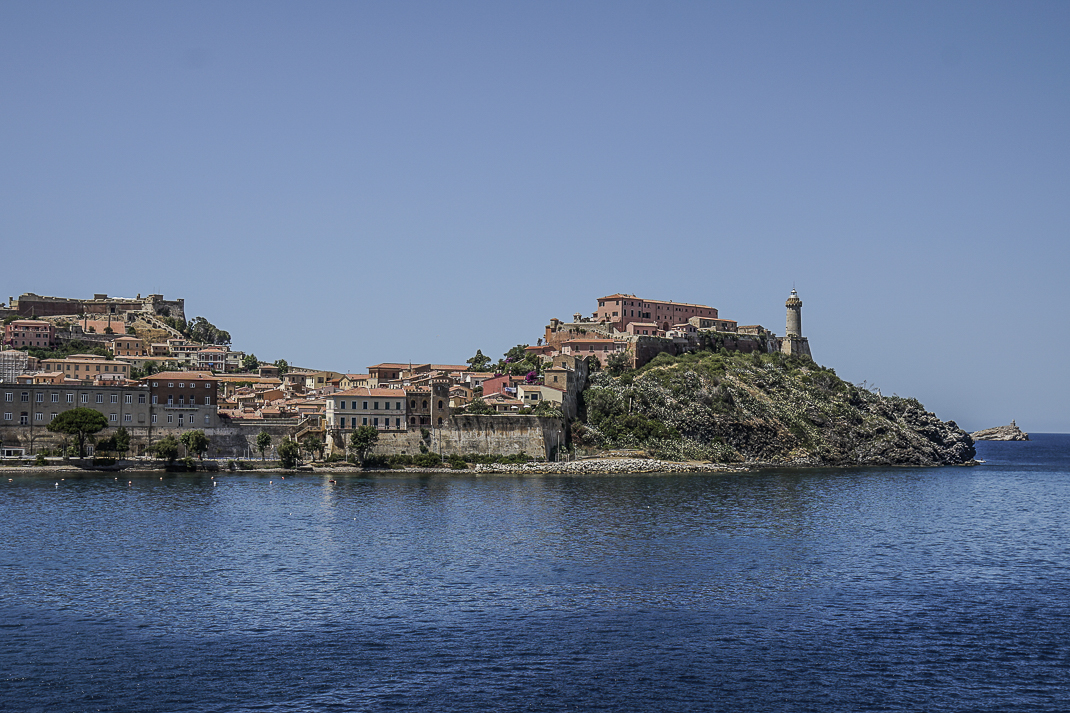
CAPOLIVERI, Italy – Napoleon was a little prick.
At least, I always thought he was. Living in Rome, I am well tuned to Shorty’s takeover of the majority of Italy in the early 1800s, looting the land of money, precious metals and artwork along the way.
In Rome his name is down there with Caligula and boxed parmesan.
But here on the majestic isle of Elba, I found myself drinking a Napoleon beer with his pointy-hatted head on the label. I saw his villa with panoramic views of the Tyrrhenian Sea. I traveled the roads he helped build and drank wine from vineyards he helped create.
I came to Elba for its beaches and found myself in history class.

Elba was a Christmas present to Marina. She’d been here in 1988 and 1990 and wanted to return. Over 8 ½ years in Italy, I’d heard so much about Elba’s beautiful beaches, quaint villages and laid-back lifestyle, I had it written in stone on my bucket list. We also wanted to visit before the July hordes arrived.
What we didn’t anticipate was that Italy is already packed. Rome has as many Yankees ball caps floating around the streets as on the island of Manhattan. All those who had their Italian vacations canceled by Covid the last two years have rescheduled, joining those already coming this summer.
The arrival
We also didn’t know Elba had something else in common with Rome besides great food: lousy public transportation. We had no desire to drive the 3-hour, 15-minute drive to the Tuscan coast and onto a ferry. Instead, we hopped a train 2 hours, 45 minutes to Campiglia Marittima then a local train 30 minutes to the port town of Piombino Marittima where giant transport ships and towering cargo cranes dominate the landscape.
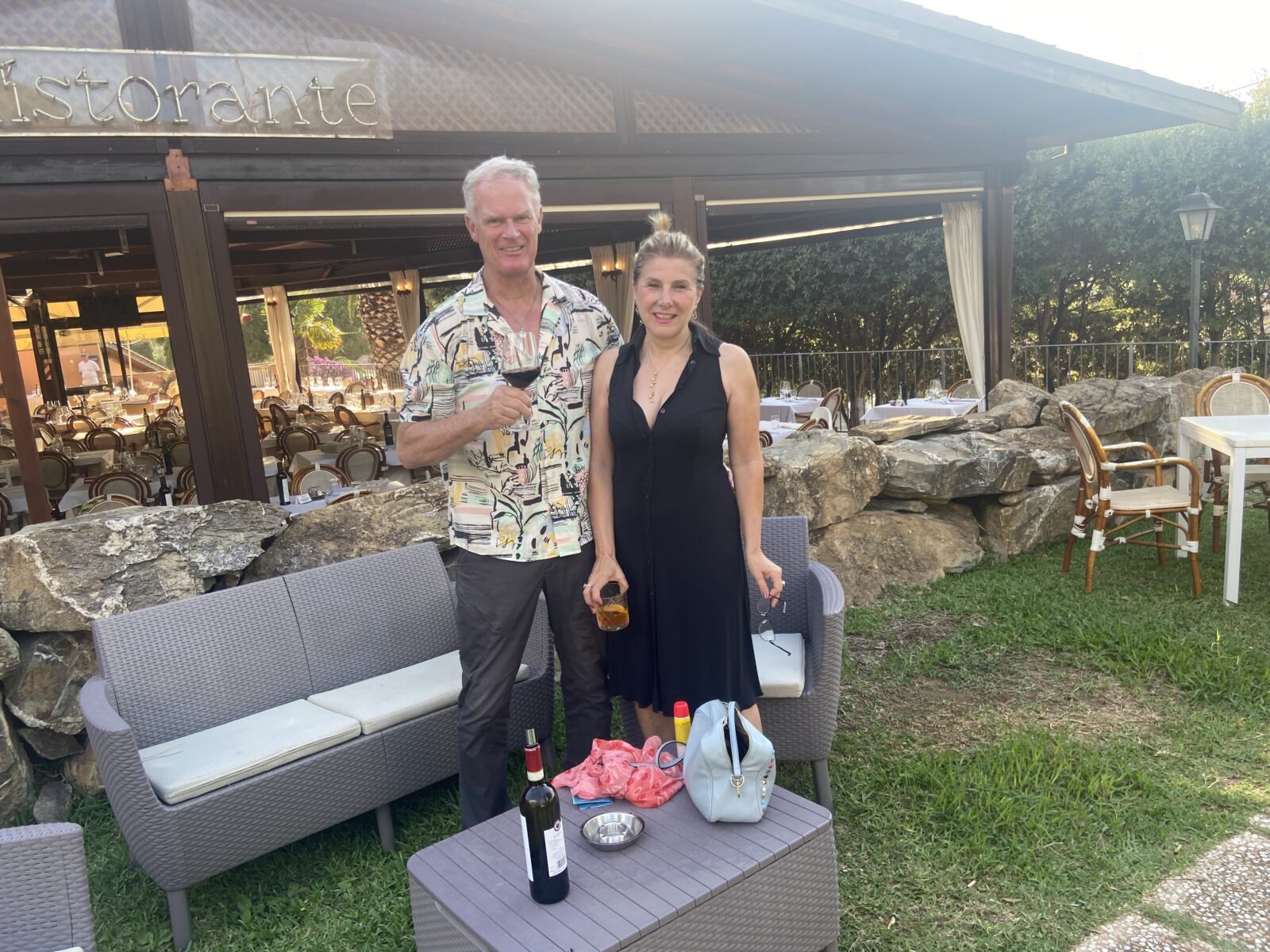
When we landed in Elba’s main town of Portoferraio after the hour-long ferry ride, we were curiously two of the few foot passengers. Everyone else had a car. We soon found out why.
I got fleeced for a 35-euro taxi ride to our hotel 20 minutes away. The ride, however, was lovely. We went through vineyards of some of Tuscany’s most underrated wines. We passed through valleys between rolling green hills. We saw fields of pear and cherries and peaches.
The cabbie, a comely Portoferraio native, complained about the crowds.
“The tourist numbers are at the same level as August,” she said.

The beauty of living in Italy is I can travel to major tourist spots in off season; the problem of living in Italy is finding yourself in major tourist spots in season.
In trying to outsmart the masses, I booked a room at Da Pilade, a historic three-star hotel in the countryside on the southeast end of the island. It had a huge pool surrounded by palm trees, an open-air dining room with a full menu of high-end Tuscan cuisine and views of the surrounding forest and green hills.
We had a balcony overlooking the pool and the Arduini family, who’ve run the place since 1965, looking after our every need. They were very kind, despite no doubt looking at me like, “You stupid American. What were you thinking taking public transportation here?”
Every time Marina and I stood on the busy narrow roads with no sidewalks waiting for buses that only occasionally came, I said to myself, “You stupid American. What were you thinking taking public transportation here?”

Da Pilade is conveniently located if you want to get away from Elba’s crowds but, again, you need a car. Elba (pop. 31,000) is only 20 miles long and 11 wide but it’s too spread out to walk and Elba’s bus system consists of only three routes.
The schedule posted at random bus stops indicate buses come, oh, every four hours or so. However, one bus driver told us, call the phone number on the sign as the schedule changes every day. It explains why we spent our first evening after dinner in Capoliveri waiting in the dark for an hour for a bus that never came then calling a taxi to take us two kilometers (1.2 miles) downhill to our hotel for 20 euros.
The only consolation for my brain lock in not renting a car is the line to drive onto the ferry was only slightly longer than the line of cars trying to park in Capoliveri.
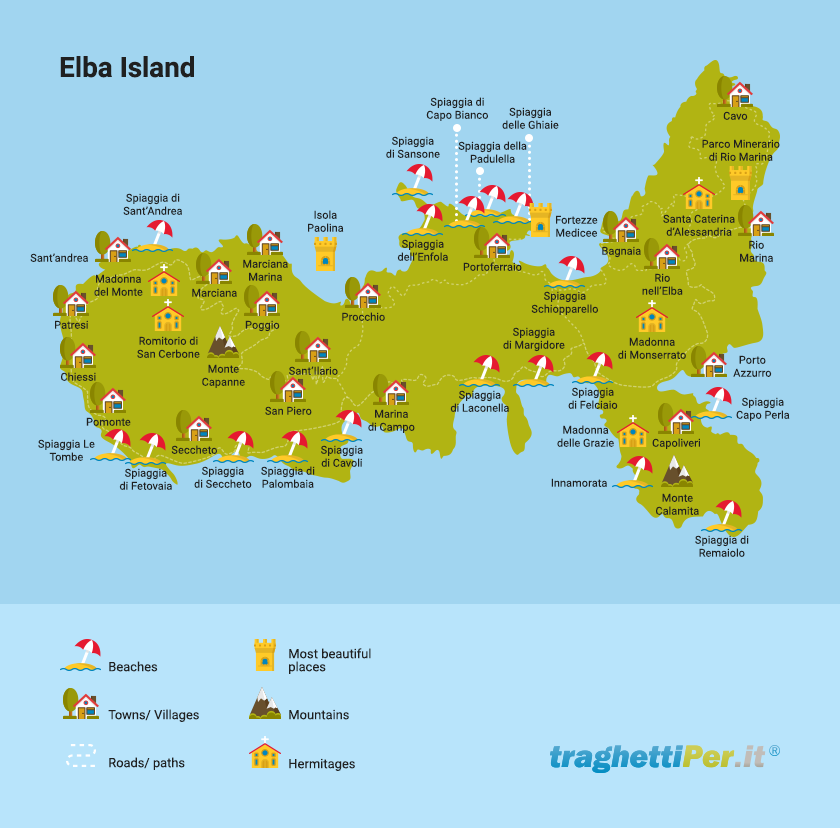
The beaches
To visit the nearest beach, we simultaneously said, “Screw it!” Well, Marina said, ”Che cazzo! (What the fuck!)” and we walked. It was 30 minutes almost entirely uphill. We saw no cars. We saw no tourists. This was the back of rural Elba. But the steaming hike on an 89-degree day made us nearly jump into the pretty marina at Porto Azzurro, the major town on the east coast.
However, we marched on. At the end of the scenic five-kilometer jaunt, we dropped down a short, steep hill to the Tyrrhenian Sea. Greeting us was a long beach of golden sand with just a couple of low-level three-star hotels. The sea was royal blue and clear and clean and sandy.
Naregno isn’t one of the more popular beaches on Elba. It wasn’t very crowded. But it shares something with all Italian beaches. I realized it when I asked Marina to take a photo.
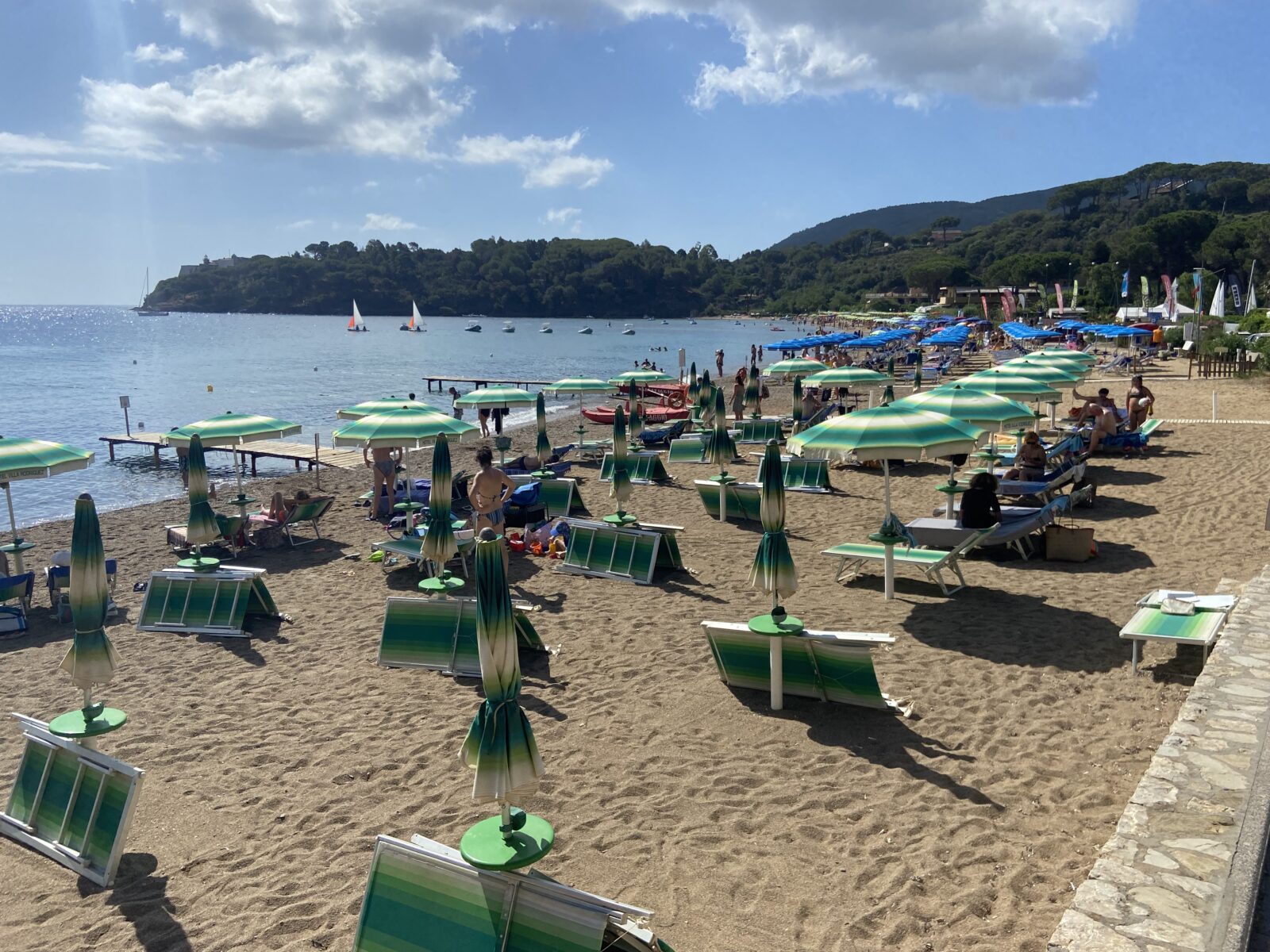
She declined. “Brutta foto, (Ugly photo),” she said. I looked down the beach and she was right. The problem with Italian beaches, as well as most in Spain and Greece, is they are dominated by lounge chairs and umbrellas. They cover the landscape and from afar they look more like a multi-colored quilt. You can barely see the sand. Even when the beach is empty it really isn’t empty.
I always thought California beaches were overrated. They’re vast and don’t have the palm trees gracing those in Florida and the Caribbean. It’s just an ocean of sand next to a North Pacific Ocean (Note the North) always too cold to be comfortable. However, California beaches are clean, raw, natural.
Italian beaches scream commercial, crowds, furniture.
But I must admit, lounge chairs sure make reading a good book comfortable in between dips in 79-degree water.
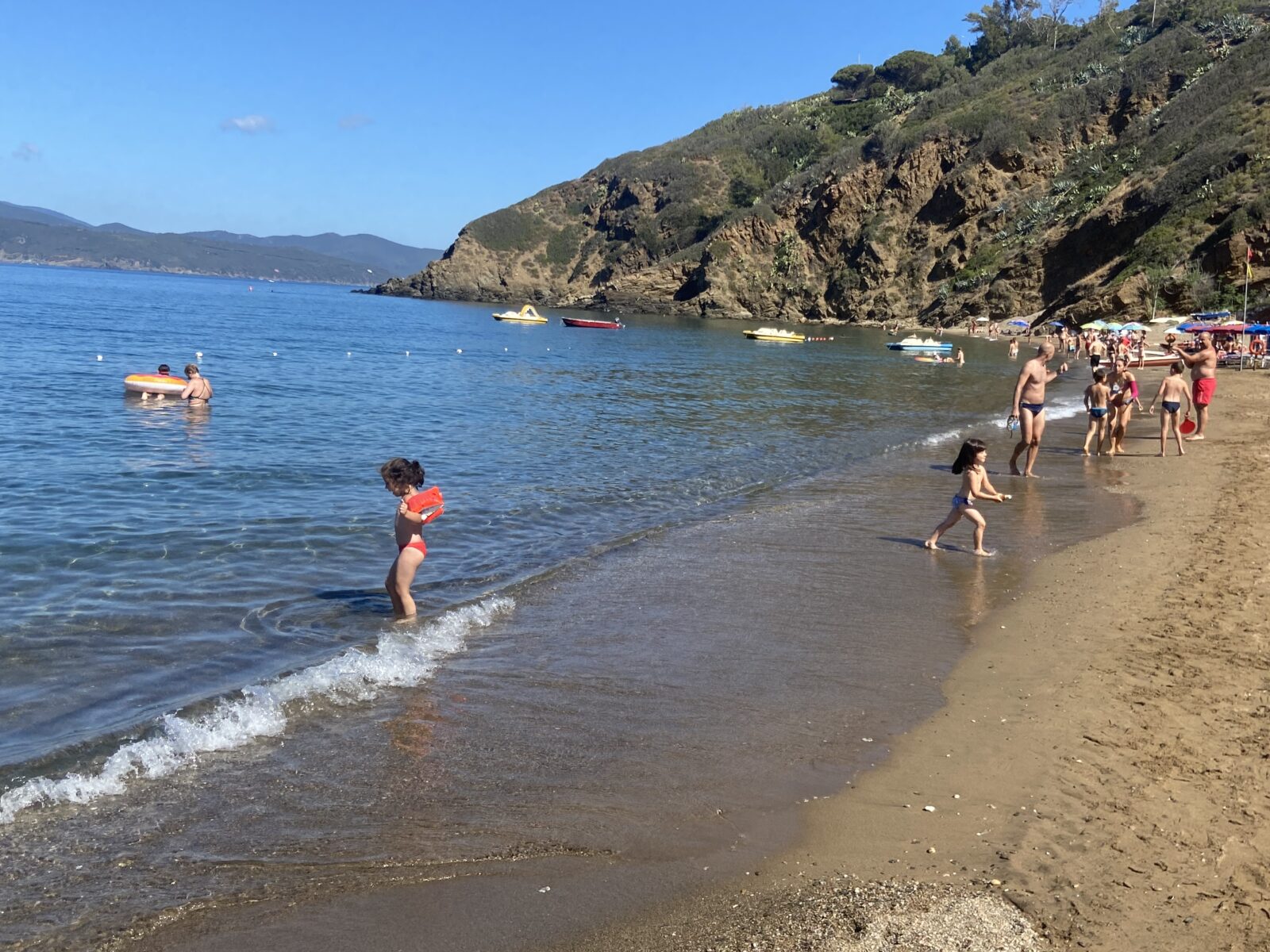
With the bus arriving only every four hours, we hoofed it back to the hotel and the next day took a taxi to our next beach. Innamorata means “Being in love” in Italian and we fell in love with Innamorata beach. I quickly forgot the 25-euro cab ride that took us up through Capoliveri and down a windy hill to a gentle swath of golden sand 300 meters long.
A forest of tall trees framed the beach where we rented lounge chairs from a small rental office. Pop hits waifed gently in the air. The deeply tanned middle-aged man in the office said buses come every 15 minutes; a waitress said it’s every hour and 10 minutes. We shrugged and vegged out on a beach that never really filled.
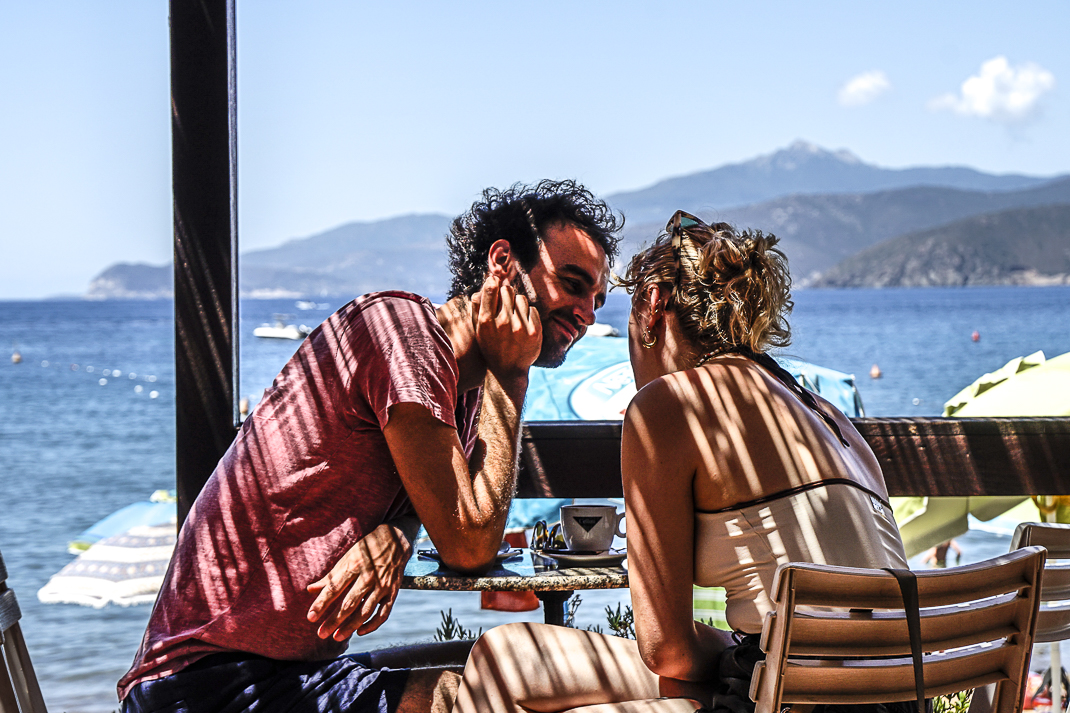
Capoliveri
To travel the 6 ½ kilometers (four miles) back to our hotel we had to wait 30 minutes (the waitress was right) for a bus to take us up the hill to Capoliveri then wait another two hours for a bus down the hill to our hotel.
It turned into a lucky break of discovery. Capoliveri is a pretty, bustling town of 4,000 people with a main pedestrian street that empties into piazza ringed with restaurants and gelaterias. Restaurants, bars and expensive boutique shops line the road and on our first night it seemed as crowded as Rome’s Piazza Navona.
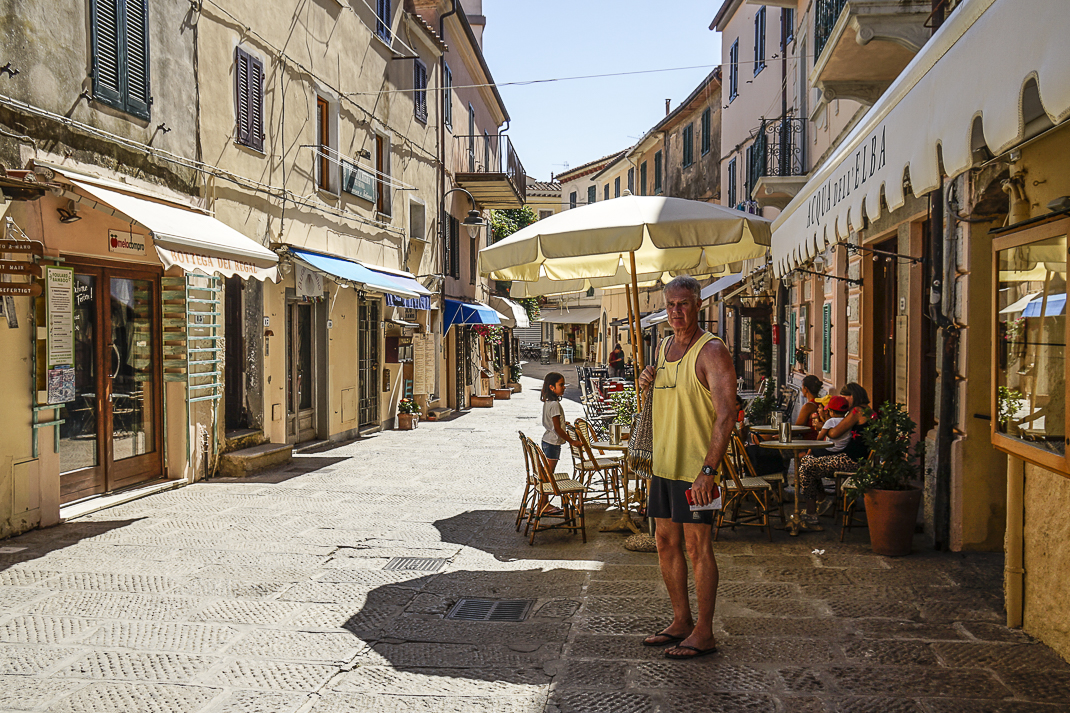
But 3 p.m. is the middle of pausa, Italy’s 3 1/2 -hour midday break. Capoliveri was nearly empty. We were free to explore the residential alleys between pastel buildings with red-tiled roofs. Everything was closed except for a tiny Sicilian bar where the owner sat in the shade on a hot afternoon.
Over a couple of ice-cold bottles of Messina beer from Sicily, she said she came from Sicily to work. Once summer tourist season ends, she goes back. She says Tuscans are stuck up, unfriendly.
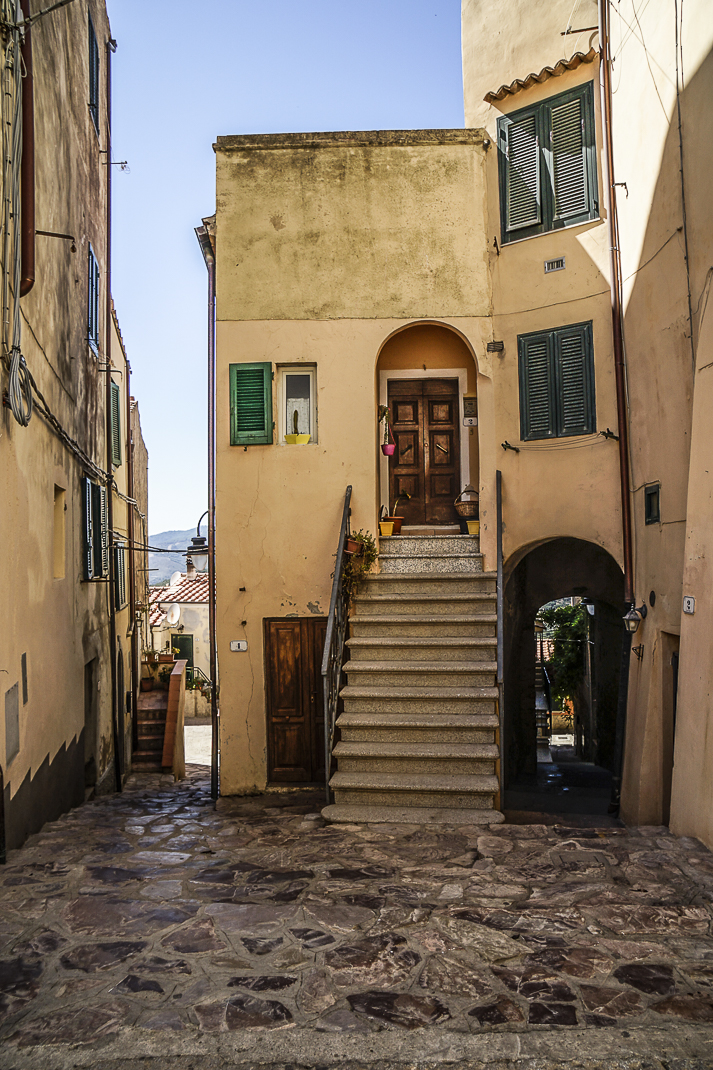
I find them wonderful. But then, I say Italians are the nicest people on earth, from Sicily to Alto Adige. Confirming it was the hilly, scenic port town of Portoferraio.
Portoferraio
It’s one of the most majestic towns on Italy’s collection of islands that dot its seas. Portoferraio sits atop a hill surrounded on three sides by water. A 16th century lighthouse standing 25 meters looms over the town’s Centro Storico like an armed guard.
Portoferraio means “iron port” in Italian. Iron ore deposits, among the oldest in the world, put Elba on the map but when mining died in the 1970s, tourism brought back the town economically. I could tell after we left the boat. Portoferraio doesn’t wow you at first. Its harbor is huge and long and lined with cafes, souvenir shops and travel agencies.
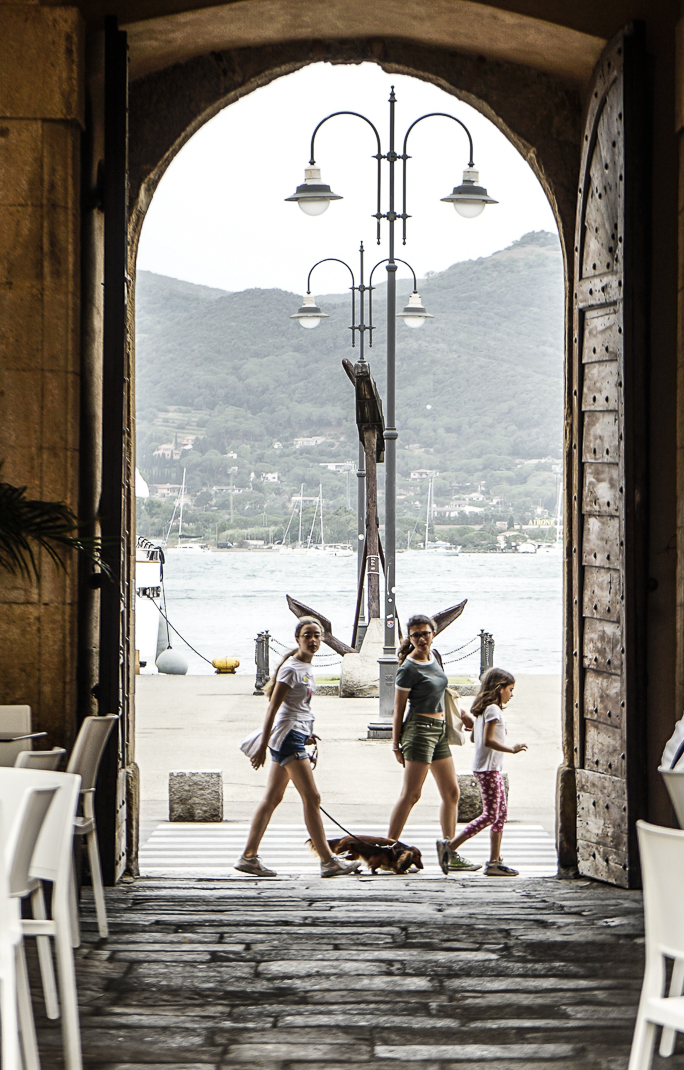
It’s when we passed through the big arch into Centro Storico where Elba’s history unfolded. After one of the best gorgonzola pizzas of my life at the horribly generic-named New Paradise Pizzeria, we saw a beautiful sign advertising Birra Napoleon.
“That’s my beer,” I heard someone say behind me. “I started that.”
I sat down with him and ordered a Napoleon Paulina, a blonde Belgian ale named for Napoleon’s beloved sister. Marcello Anastasi is an Elba native working for the United Nations in Geneva, Switzerland. Fit, tanned with close-cropped hair and trim beard whisked with gray, Marcello told me Elba didn’t have a brewery. Once in a pub in Northern Italy 15 years ago, he saw a small brewing machine. That’s exactly what Elba needed: Its own beer.
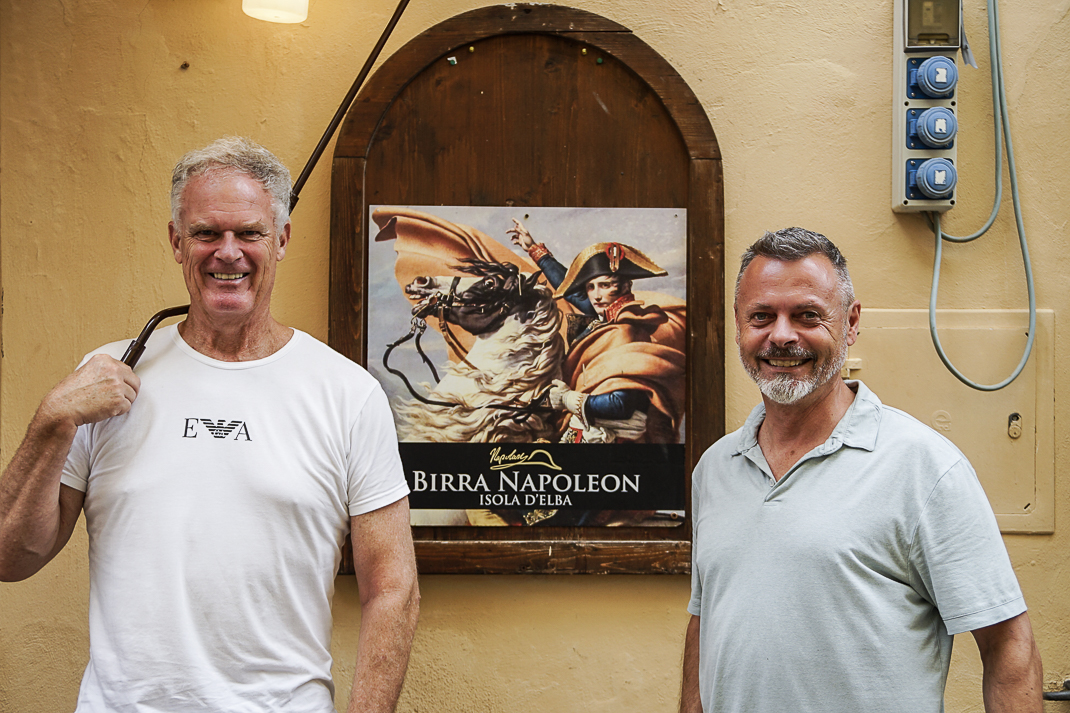
“I think of which name for my beer,” he said. “One day I received a postcard of Napoleon. I do the research. The trademark is free. I registered Napoleon Beer. But I need also one logo. In this postcard, they have the signature of Napoleon. I look at the signature and put just the end, the cap. Now everybody likes it.”
Now 10 years old, Napoleon has four beers all of which can be bought and carried in a handy case shaped like Napoleon’s hat. The beer not only tastes good – and, in summer, is ice cold – but it symbolizes Elba’s most famous citizen, however short lived.
After Napoleon stretched France’s footprint into Germany, Spain, Italy and Poland, he suffered a string of losses in Russia and Germany. After Paris fell to an allies coalition, in 1814 the Allies exiled him to Elba, with only 12,000 inhabitants at the time. They did, however, give him sovereignty over the island and let him keep his title of emperor.

Nevertheless, the humiliation of defeat led him to try and commit suicide with a pill left over in case the Russians captured him. Fortunately for him, the pill was old and ineffective. He went on to lead a life of luxury.
Atop the hill above Centro Storico, between the two Medici fortresses of Forte Falcone and Forte Stella, stands Villa dei Mulini. For nine months in, um, “exile,” Napoleon lived in this two-story palace with panoramic views of the Tyrrhenian Sea and a large garden he installed among his many renovations.
I took the long stairway up and entered where a young German-speaking wedding couple, in a skin-tight white dress and gray suit, posed for pictures. They stood in front of Paulina’s four-poster bed draped in burgundy curtains, part of the entire top floor Napoleon dedicated to his sister.
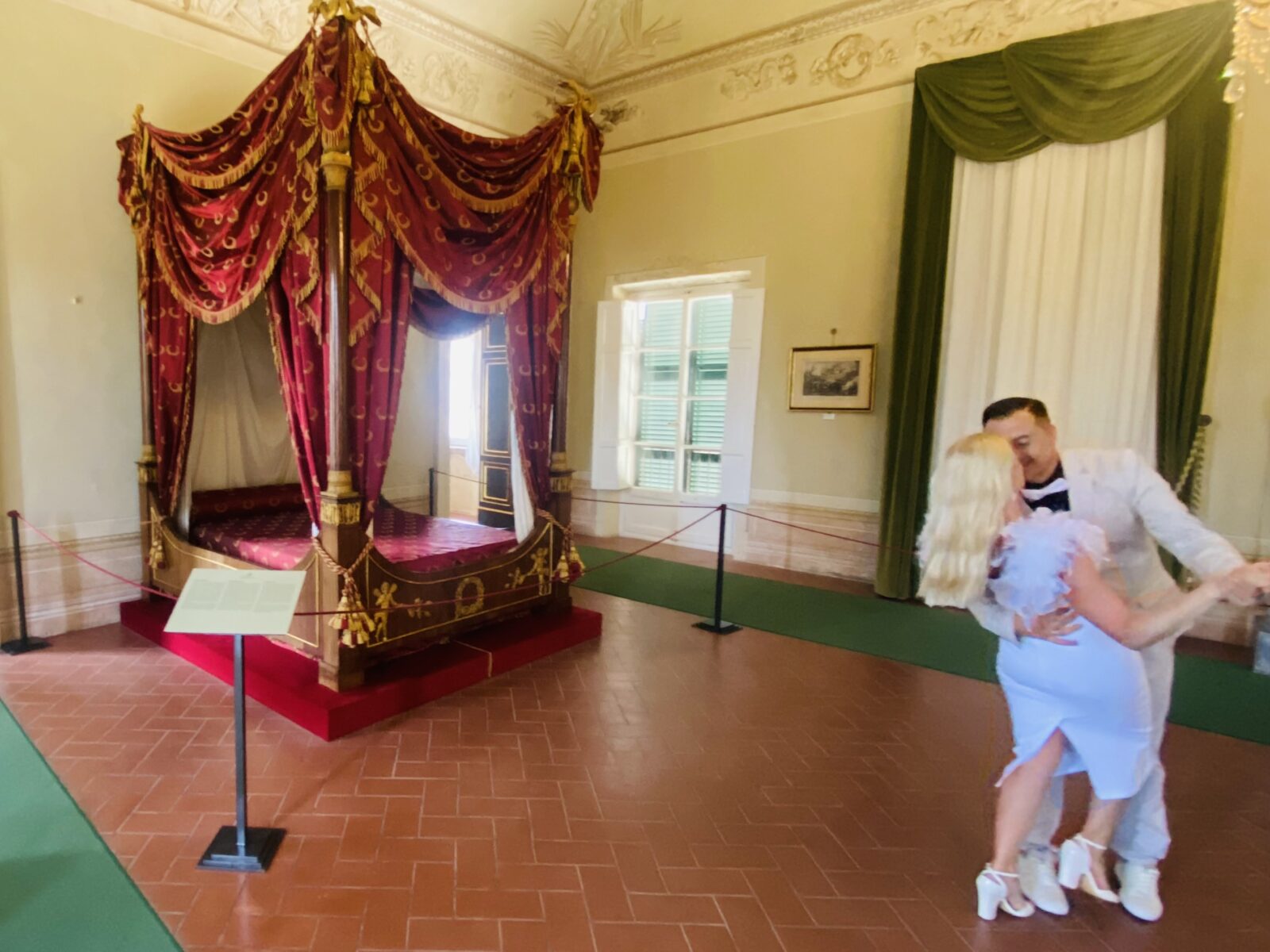
Busts and portraits of Napoleon are scattered here and there and crystal chandeliers decorate nearly every room. His library consists of 2,000 leather-bound books he brought from Paris, showing his interests in history, science and Greek and Latin classics.
Napoleon eventually escaped back to France but not before showing his love to the Elbani by revamping the island’s roads and agricultural, legal and educational systems. He also gave them the flag it still flies today. It features three bees which Napoleon considered symbolized the unity and hard work of the island’s people. Bees were also considered the first emblems of the kings of France.
They were also small.
As we managed to catch a bus back to the port for our trip home, I wondered what Monsieur Court (Mr. Short in French) would think of Elba today. It’s big and beautiful with sandy beaches and all the great wine and food the rest of Tuscany has to offer. But its roads need work. So does the bus system that uses them.
I’ll be back but I’ll bring two more items: an extra bag to bring back a box of Napoleon beer and my international driver’s license.
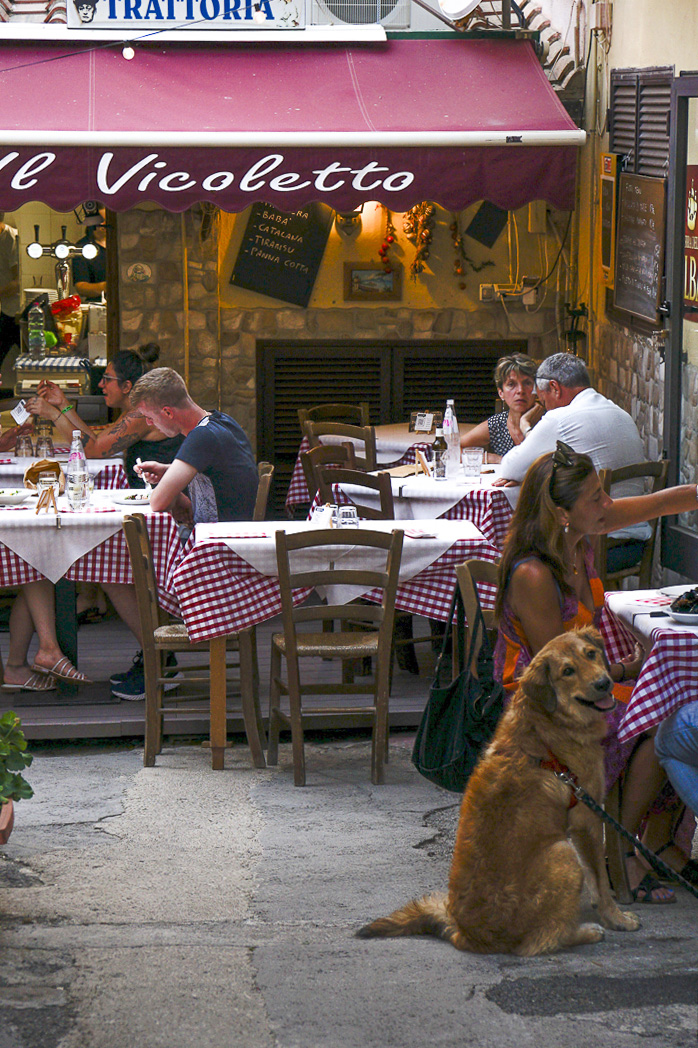
Do you want to go?
How do you get there? Elba has an airport but it’s expensive. It’s best to fly to Pisa and drive the 70 miles (112 kilometers) to the port town of Piombino Marittima. Piombino is 110 miles (178 kilometers) from Florence, 160 miles (262) from Rome and 240 miles (403) from Milan. I paid 38.70 euros for the 3-hour, 45-minute train ride to Piombino and 13.50 for the hour-long ferry ride to Elba. Ferries leave hourly and no need to reserve except in August or a summer weekend.
How do you get around? Public buses are infrequent and unreliable. The schedule changes frequently. Renting a car on Elba in August starts at about 60 euros a day. Driving onto the ferry varies in price but starts at about 30 euros.
Where do you stay? Da Pilade, Per Capoliveri Luc. Mola 5, 39-0565-968635, https://www.hotelpilade.it/, info@hotelpilade.it. Three-star hotel in woods a little more than a mile down the hill from Capoliveri. Features huge pool and dining area, top-notch menu and rural solitude. I paid 480 euros for four nights at the end of June.
Where do you eat? Il Vicoletto, Via Giosue’ Carducci 2, Capoliveri, 39-393-931-2481, https://m.facebook.com/vicolettodicapoliveri/, vicolettocapoliveri@libero.it, noon-2:30 p.m., 7-10:30 p.m., Monday 7-10:30 p.m. Located off a quiet alley, Il Vicoletto serves excellent fresh fish dishes in the 15-euro range.
New Paradise, Piazza della Repubblica 45, Portoferraio, 39-05-65-916-833, noon-2:30 p.m., 6:30 p.m.-midnight Tuesday-Sunday. Neapolitan-style pizza from 5-10 euros.
When to go? May and September are ideal months. August is the worst for crowds. July isn’t much better. However, temperatures rarely reaches 90 and summer lows are high 60s.
Need more information? Parco Nazionale dell’Arcipelago Toscana Office, Calata Italia 4, Portoferraio, 39-0565-90-8231, www.parcoarcipelago.info, 9 a.m.-7 p.m. April-October, 9 a.m.-10 p.m. Tuesday and Thursday in August, 9 a.m.-4 p.m. Monday-Saturday, 9 a.m.-3 p.m. Sunday November-March.


July 6, 2022 @ 11:25 am
This is on my bucket list too. Thank you for all the info and Marina, your photos are superb!
July 6, 2022 @ 11:28 pm
Sixty bucks … so $120 would have been worth it !
July 7, 2022 @ 2:03 pm
John, thanks for bringing back memories of Elba for me. For me it answers the question, ” Where were you in the summer of 1983 when you first heard the Italian disco hit ” Vamos a La Playa” by Righeira? The answer being in a waterfront cafe in Portoferraio drinking Heineken beer with the owner of the motor scooter shop about to rent us a couple of Vespas for our second day on Elba having learned the hard way the day before that you need wheels on this island. The weather was beautiful, if a bit hot, in July with a cooling breeze as we enjoyed the cold Heineken. It would only have been better if it could have been a cold Birra Napoleon!
July 14, 2022 @ 2:14 pm
Hi John,
Great read! After 15 years of vacationing in Italy we finally made it to Elba this year. We were there in May, the weather was perfect and it was blissfully deserted. Advised by family, we drove onto the ferry so that we would have a car to tour the island. Drove the entire circumference and loved it all! What a beautiful island! And the beaches are mostly public —that is my pet peeve with the beaches on the mainland. If we were ever lucky enough to afford a beach house, it would be on Elba!
July 17, 2022 @ 4:54 pm
Loved your article.
My parents came from Capoliveri and I loved there in my teenage years. My dad is still alive at 96, lives in Melbourne. Luckily we still have an apartment in Capoliveri and I go back when I can. Great memories, hidden treasure.
July 17, 2022 @ 6:25 pm
My roots are here. Both my grandparents were from Capoliveri. The first time I was there was in 1980 to meet my cousins. Since then, I have been back two more times. It’s hard not to fall in love with this wonderful, beautiful place. And, oh the food.